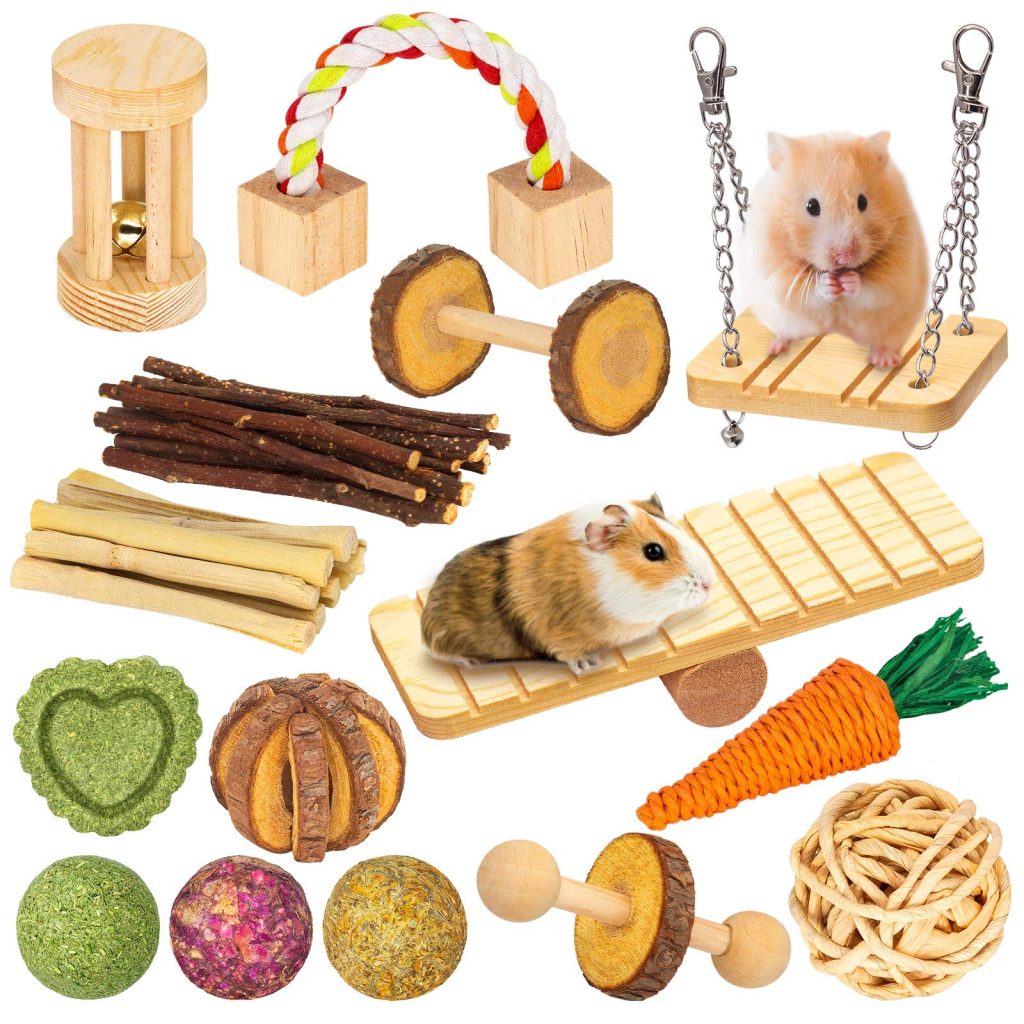Hamsters make great indoor pets. They are small, cute, and easy to take care of. However, like any other pets, they require a proper living environment. The first thing you need to consider when getting a hamster is the cage and accessories. In this article, we will provide you with a detailed guide on how to choose the right hamster cage and accessories.

- Hamster Cage
The first thing to consider when choosing a hamster cage is the size. Hamsters need enough space to move around, play, and exercise. The minimum recommended size for a hamster cage is 24 inches long, 12 inches wide, and 12 inches high. However, bigger is always better. The more space your hamster has, the happier and healthier it will be. A cage that is too small can lead to stress, boredom, and even health problems.
The next thing to consider is the type of cage. There are several types of hamster cages available in the market. Some of the most common types are:
Wire cages – These cages are made of wire mesh and have a plastic or metal bottom. They provide good ventilation and are easy to clean. However, they can be noisy and may not be suitable for hamsters that like to chew on their cages.
Aquariums – These cages are made of glass or plastic and have a solid bottom. They provide good visibility and are excellent for hamsters that like to dig and burrow. However, they require more maintenance and may not provide enough ventilation.
Modular cages – These cages are made of plastic and have multiple levels and compartments. They provide plenty of room for your hamster to climb and play, and they are easy to customize. However, they can be expensive and may not be suitable for all hamster breeds.
DIY cages – These cages are made by hamster owners themselves. They can be made from a variety of materials, such as plastic bins, wooden boxes, or wire mesh. They are customizable and can be made to fit your hamster’s specific needs. However, they require some skills and knowledge in DIY projects.
Once you have chosen the type of cage, you need to consider the features and accessories. Here are some important features to look for:
Doors – The cage should have at least one door that is big enough for you to reach in and clean the cage or feed your hamster.
Latches – The cage should have sturdy latches that can securely close the door and prevent your hamster from escaping.
Bar spacing – The cage should have bar spacing that is small enough to prevent your hamster from escaping or getting stuck between the bars.
Platforms and ramps – The cage should have platforms and ramps that allow your hamster to climb and explore. Make sure they are sturdy and not too steep.
Bedding – The cage should have enough bedding to provide your hamster with a comfortable and clean sleeping area. Hamsters like to burrow, so provide at least 2-3 inches of bedding.
Water bottle and food dish – The cage should have a water bottle and food dish that are easily accessible for your hamster. Make sure they are made of non-toxic materials and are easy to clean.
Toys and accessories – The cage should have plenty of toys and accessories to keep your hamster entertained and stimulated. Some good options are tunnels, exercise wheels, chew toys, and hiding spots.

- Hamster Accessories
In addition to the cage, there are several accessories that are essential for your hamster’s well-being. Here are some important accessories to consider:
Exercise wheel – Hamsters love to run and play, so an exercise wheel is a must-have accessory. Make sure it is the right size for your hamster and is made of safe materials.
Chew toys – Hamsters have constantly growing teeth, so they need to chew to keep their teeth healthy. Provide them with plenty of chew toys, such as wooden blocks or sticks.
Hiding spots – Hamsters like to have a place to hide and feel safe. Provide them with hiding spots, such as tunnels or small houses.
Hammocks and swings – Hammocks and swings provide a fun and cozy place for your hamster to relax. Make sure they are sturdy and made of safe materials.
Water bottle and food dish – As mentioned earlier, your hamster’s cage should have a water bottle and food dish that are easily accessible.
Bedding – Your hamster’s bedding should be changed regularly to keep the cage clean and fresh. Provide enough bedding for your hamster to burrow and feel comfortable.
Cleaning supplies – To keep your hamster’s cage clean and hygienic, you will need cleaning supplies such as a cage cleaner, disinfectant, and paper towels.

Choosing the right hamster cage and accessories is crucial for your hamster’s health and happiness. When selecting a cage, make sure it is the appropriate size for your hamster and has the necessary features, such as doors, latches, platforms, and ramps. Additionally, consider the type of cage that will best suit your hamster’s needs, such as wire cages, aquariums, modular cages, or DIY cages. When it comes to accessories, provide your hamster with plenty of toys, hiding spots, chew toys, and a comfortable exercise wheel. Lastly, keep the cage clean and hygienic by changing the bedding regularly and using cleaning supplies.
Taking the time to choose the right hamster cage and accessories will help ensure your pet’s well-being and provide them with a comfortable and safe living environment. Remember to consider your hamster’s specific needs and preferences when selecting these items, and always prioritize their health and happiness above all else.